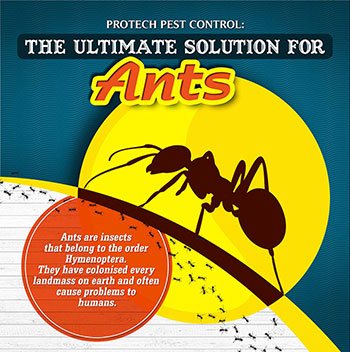Rodent-Proofing Your Outdoor Room: Methods For A Pest-Free Lawn
Rodent-Proofing Your Outdoor Room: Methods For A Pest-Free Lawn
Blog Article
Produced By-Aagesen Meldgaard
Did you understand that rats can squeeze via openings as small as a quarter? Imagine the implications for your outdoor area. From munching on plants to nesting in relaxing corners, these pests can create chaos if provided the opportunity. However concern not, there are practical approaches you can employ to maintain your yard rodent-free. By taking straightforward actions to seal entrance points and maintain a clean atmosphere, you can create a fortress versus undesirable fuzzy site visitors. So, are you prepared to protect your outside sanctuary from these pesky trespassers?
Identify Entrance Details
To successfully rodent-proof your exterior space, begin by determining potential entrance points. Evaluate your backyard for any type of gaps or openings that rodents can make use of to access. Examine locations such as gaps under doors, holes in the walls, or openings around energy infiltrations. Bear in mind that computer mice can squeeze with openings as small as a dime, so be detailed in your assessment.
Concentrate on locations where energies enter your home, such as where pipes, wires, or wires go into the structure. Seal any gaps around these access factors with materials like steel wool or caulk. Furthermore, check for any type of splits in the foundation or voids in the siding that can work as access factors for rats.
Pay attention to areas where plants meets your home, as overgrown plants can supply hiding spots and very easy gain access to for rats. Trim back any type of looming branches or shrubs that could be used as bridges to your home. By determining and sealing off these entrance points, you can significantly minimize the chances of rats attacking your outside room.
Implement Exclusion Actions
Checking and securing entrance factors is the primary step in rodent-proofing your outdoor area; currently you'll act by implementing exclusion procedures.
Beginning by installing door brushes up on all outside doors to prevent rats from pressing through spaces. https://indianexpress.com/article/world/ukrainian-risks-her-life-to-rescue-wild-animals-from-war-8076139/ splits and holes with weather-resistant sealant, focusing on areas where utility pipelines enter your home.
Usage wire mesh to cover vents and chimneys, guaranteeing they're securely attached. Cut tree branches and plants away from the house to eliminate possible bridges for rodents to access your roofing system.
Furthermore, take into consideration mounting steel blinking around the base of your home to prevent burrowing. Shop fire wood at the very least 18 inches off the ground and far from your residence.
Maintain garbage in snugly sealed containers, and promptly clean up any spilled birdseed or pet dog food. By implementing https://edgarzupje.blog-gold.com/39951802/observe-the-fight-in-between-a-venerable-structure-and-a-sneaky-termite-hazard-as-experts-expose-sophisticated-techniques-to-protect-its-heritage , you can dramatically reduce the probability of rats invading your outdoor room.
Maintain Cleanliness and Trimmed Landscape Design
Guarantee your exterior space stays neat and your landscaping is frequently cut to discourage rats from locating harborage or food resources. Keeping your yard tidy is crucial to minimizing attractions for rats. Get rid of any kind of debris, mess, or unused items that could function as concealing areas for these insects. Rats are drawn to locations with simple access to food and sanctuary, so by keeping cleanliness, you make your home much less appealing to them.
Routinely trimming your landscaping is additionally crucial in rodent-proofing your exterior area. Overgrown greenery offers rats with adequate hiding areas and potential nesting websites. By maintaining your yard cut, shrubs cut, and trees trimmed, you remove prospective environments for rodents. Furthermore, cut landscaping makes it harder for rodents to access your home as they prefer locations with enough insurance coverage for security.
Verdict
In conclusion, by making the effort to rodent-proof your exterior area, you can make certain a pest-free yard for several years ahead. Keep in mind to on a regular basis evaluate for access points, apply exclusion measures, and maintain your lawn clean and well-kept.
With these basic techniques in place, you can appreciate a relaxed and rodent-free outdoor atmosphere. So, don't postpone - begin rodent-proofing today and say goodbye to unwanted critters in your yard!
